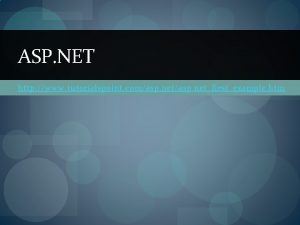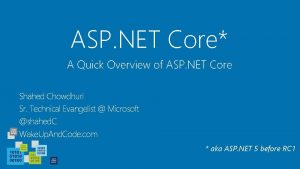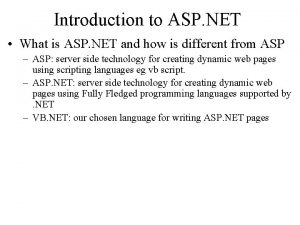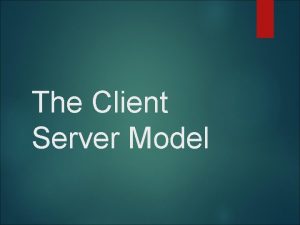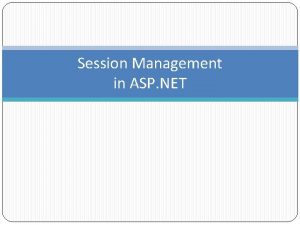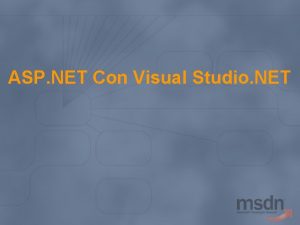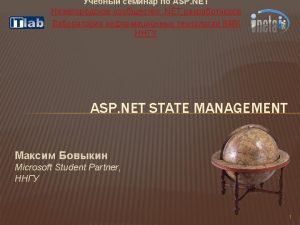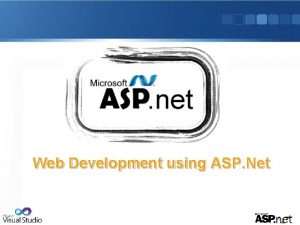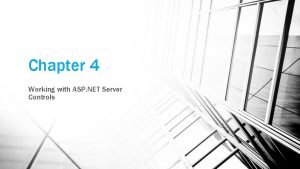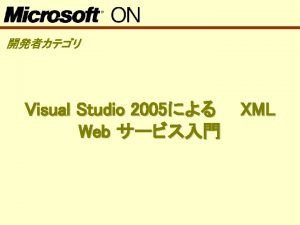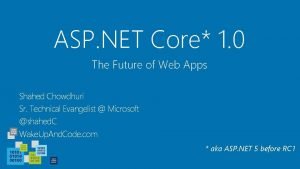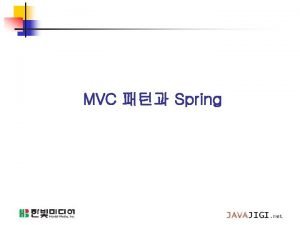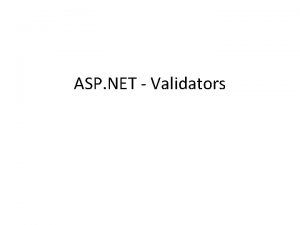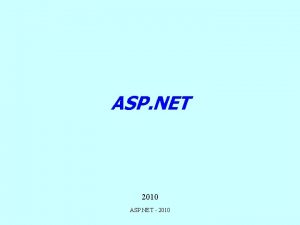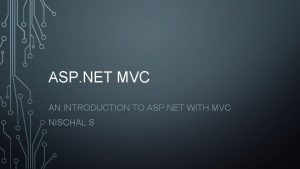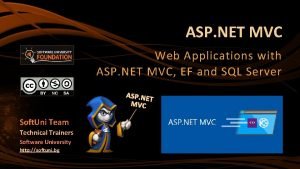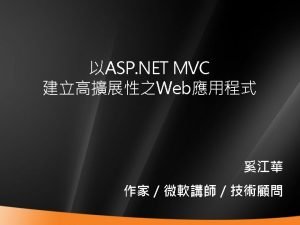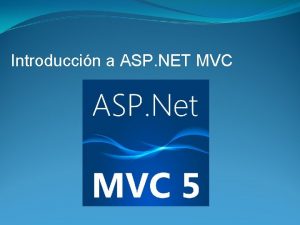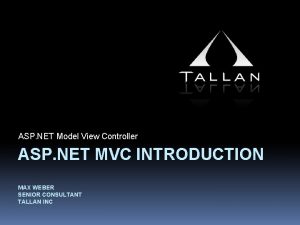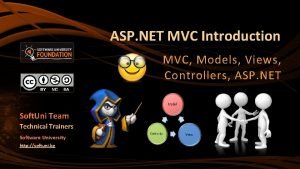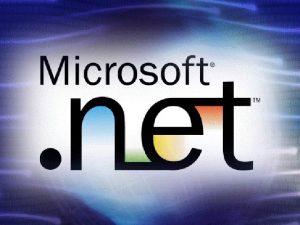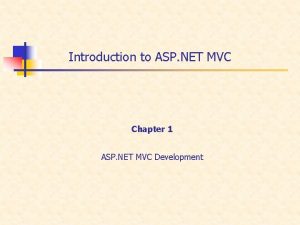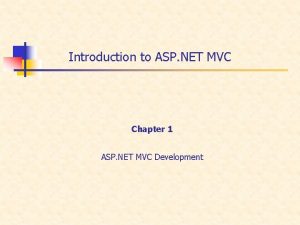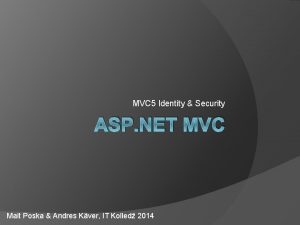Introduction to ASP NET MVC ASP NET MVC
















- Slides: 16

Introduction to ASP. NET MVC

ASP. NET MVC /Home/About Model Controller View

Overview • Controllers • Requests come into the controller from the routing engine • The requests specify a controller and an action method in the controller to execute /Home/Index • The Public methods inside of the controllers are actions • Typically the methods build models to be displayed in a view • Return Action. Results such as returning a View which can be used to display a model • Views • Use the Razor markup syntax that lets you embed server-based code into web pages • Models • Classes that describe your application data

Naming conventions for models, controllers, and views • Model classes generally describe 'real-life' entities so call them by name • Product • Student • Controllers add the Controller suffix • Products. Controller • Students. Controller • Views are in the Views folder, and each folder in the Views folder matches the name of a controller, without the controller suffix. Each of those folders contain a. cshtml file with a name that corresponds to an action in the controller.

Controllers • Routing rules deliver requests to the controller • Controller Actions • Public methods on the controllers that can respond to an http request from the web • Action Filters • Introduce pre and post actions to a controller • Action Parameters • Input data to actions • Action Results • Output different types of results from the actions

Routes and Controllers • Routing engine used to direct requests to the controllers routes. Map. Route( name: "Default", url: "{controller}/{action}/{id}", defaults: new { controller = "Home", action = "Index", id = Url. Parameter. Optional } );

Actions • Actions are public methods inside of a controller class • Action parameters are used to input data to an action • Action results typically return an Action. Result • Will utilize Action Selectors that are available • Will apply Action Filters

Action. Result • Actions typically return an Action. Result • There are three categories of data types of Action. Result • Content Returning Results • Redirection Results • Status Results

Action Selectors • Action. Name • Specifies the action name for the method – used when you want to alias your actions. • Accept. Verbs • Specify with verb is allowed to reach an http action • Http. Post, Http. Get [Action. Name("Find")] [Http. Get] public Action. Result Get. By. Id(int id) { //get from database return View( ); } [Action. Name(“Modify”)] [Http. Post] Public Action. Result Edit(string department. Name) { //change department name return View( ); }

Action Filters • An action filter is an attribute that modifies the way in which the action is executed. • Action filters can be applied to individual actions or at the controller level to apply to all actions in the controller. • The ASP. NET MVC framework includes several built-in action filters: • Output. Cache • Handle. Error • Authorize • You also can create your own custom action filters.

Views • A view is responsible for the UI (user interface). • A view is a template which binds and displays HTML controls with data coming from the model. • In MVC, views contain a combination of C# and html (. cshtml) • The. cshtml file uses the Razor view engine templates to produce HTML • The return type of view is “View. Result” or “Action. Result”

Razor Templates • Razor View engine allows us to use Razor templates to produce HTML

Layout with Razor • _Layout. cshtml defines what you want to appear on every page of your application. • It is where you have your html, head, and body tags and where you define your navigation links.

HTML Helpers • The purpose of an html helper is to make it easy to create small blocks of html • Create inputs • Create links • Create forms

ADO. NET • The Microsoft data access framework • A set of libraries that supports interactions with many data sources • Can be used with nearly all major database implementations such as SQL Server, Oracle, MS Access, and ODBC • Uses the disconnected data access architecture • The Entity Framework is built on ADO. NET classes

Entity Framework (or ADO. NET Entity Framework) • Entity Framework is the Microsoft version of Object-Relational Mapper (ORM) • ORMs map objects to relational tables • Using the Entity Framework allows us to: • build and maintain data access in a much shorter time • focus on solving business problems without worrying about the underlying data storage • Use Language Integrated Query (LINQ)
 Asp tutorialspoint
Asp tutorialspoint Asp.net mvc 5 identity authentication and authorization
Asp.net mvc 5 identity authentication and authorization Classic asp to asp.net migration
Classic asp to asp.net migration What is aspnet
What is aspnet Introduction to asp.net
Introduction to asp.net Sql injection waf bypass payloads
Sql injection waf bypass payloads Client server architecture in asp net
Client server architecture in asp net Asp.net session management
Asp.net session management Asp.net execution model
Asp.net execution model Asp.net agenda
Asp.net agenda Inurl:bug bounty intext:token of appreciation
Inurl:bug bounty intext:token of appreciation Asp net session state
Asp net session state Web development timeline
Web development timeline Asp.net server controls
Asp.net server controls Asp.net custom control
Asp.net custom control Asp.net core soap
Asp.net core soap Net core 1
Net core 1
